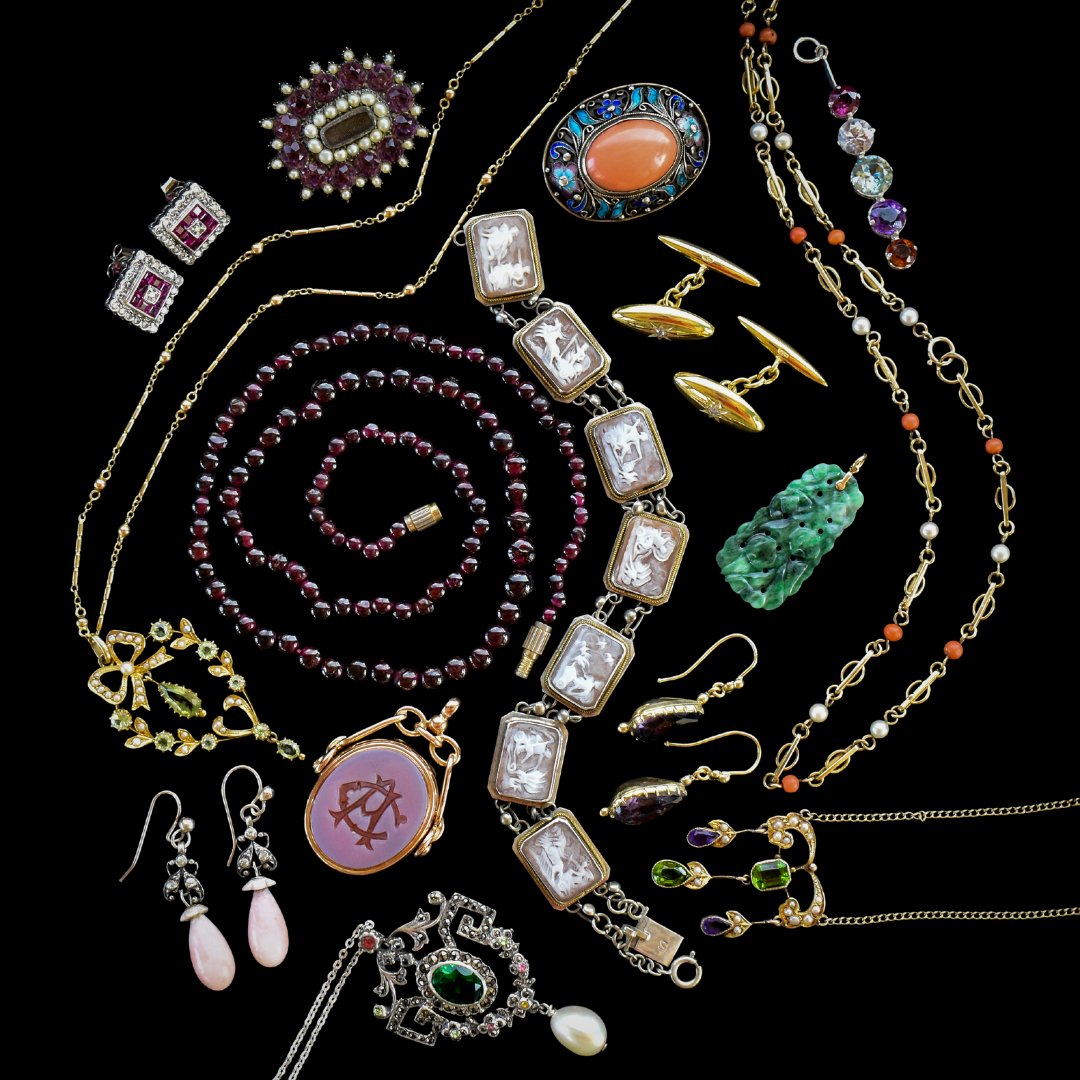As we enter spooky season and the evenings are drawing in, we believe it’s only right to talk about the meaning behind celestial
jewellery. Stars and crescents have been popular motifs since the 17th century with women of the
Georgian,
Victorian and
Edwardian eras adding diamond starbursts and crescent jewels to their collections. Throughout these eras jewellery makers and wearers perfected the art of symbolism through their jewellery items.
The fascination with the solar system and its celestial bodies began many years ago, from the 1860s onward, stars were a hugely popular motif. Stars could be found carved into gemstones, fashioned as brooches and hair ornaments, or formed with pearls. Stars themselves came to mean good luck and something to be wished upon, to this day we still wish on stars in hopes of achieving our dreams. Below, are two quality antique
Victorian pins and a pair of antique starburst mens cuff links from our jewellery collection which feature a central star motif.
Another popular jewellery piece from this time were gypsy
rings. The style of this ring was a plain or slightly engraved band set with either rubies, sapphires, garnets, amethyst, diamonds or emeralds. Traditionally, these rings were given as a friendship band, as a gift to either young girls or by lovers and husbands. They were incredibly popular in the late Victorian times. A simple and easy to wear ring, with the possibility to select from an abundance of gemstones. The best part about these Gypsy rings is their durability and the flush gemstone setting is a very wearable, everyday style. Below, are some of our beautiful gypsy rings from our collection.
The
Victorian era was all about sentimentality it was a time of deep, meaningful symbolism, almost like a second language where love, friendship, loyalty and many other emotions could be silently communicated through specific jewellery styles and motifs, even with the placement of gemstones!
Jewellery was a discrete form of communication. Crescent moons were said to represent the powerful feminine ‘moon goddess’ an inspiring symbol of women entering the workforce during the Industrial Revolution as well as periods of change, such as a new relationship, because of the lunar calendar. Victorian brides wore brooches with a crescent moon cradling a flower on their honeymoon, leading to the name ‘honeymoon brooches’. These were all about beauty, femininity and the age-old idea of stars being used as celestial maps to guide travellers’ home.
Crescent Moon images became popular during the late 19th Century as an interest in astronomy grew. They were used in jewellery to symbolise guidance and to help lead you in the direction you are meant to go.
Celestial jewellery remains just as popular to this day. Our fascination with the stars will always be another way for us to connect with nature. We hope you have enjoyed learning about the symbolism and hidden secrets behind celestial jewellery with us.
Here at Lancastrian Jewellers, we stock a great range of jewellery from antique pieces to modern classics, we have something for everyone.
You can browse more of our Victorian Jewellery here.
Please get in touch if you need any further help finding the perfect piece of jewellery.
Further Reading:
If you'd like to expand your knowledge on Celestial Jewellery even further, we recommend taking look at the links below.













